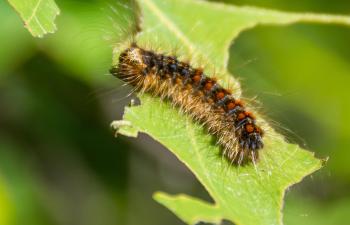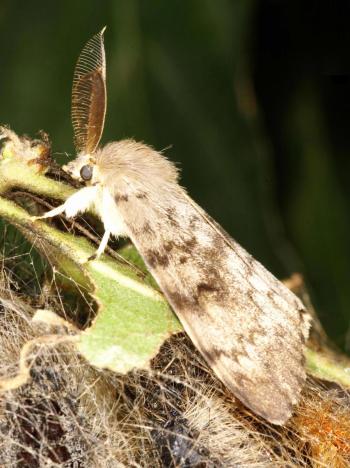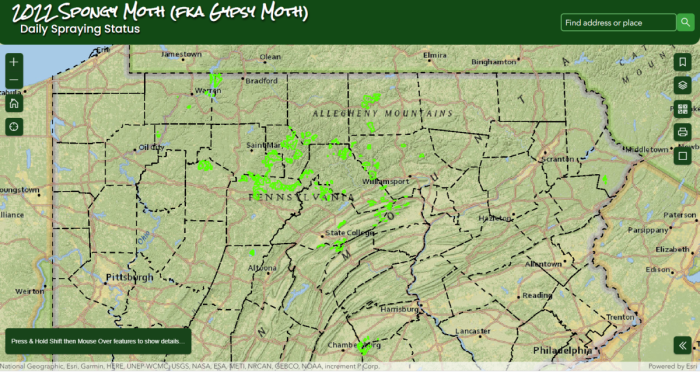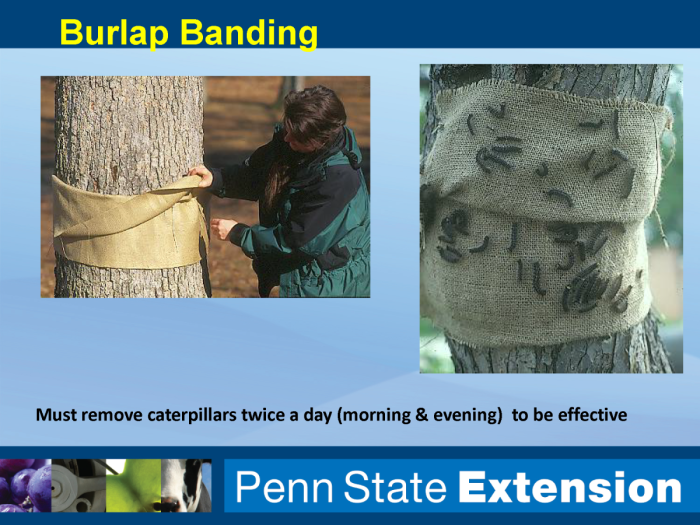Managing Spongy Moth Populations in Pennsylvania

Spongy moths, formerly known as "Gypsy Moths", or by their scientific name, Lymantria dispar (L.), are present in Central Pennsylvania, and are considered pests by many environmentalist groups. According to the Pennsylvania Department of Conservation and Natural Resources, "The spongy moth has been causing significant forest damage in Pennsylvania since the 1970s. The most recent outbreak occurred from 2013 to 2019 and another outbreak occurred from 2021 through 2022."

Progressive spread of Lymantria dispar) across north east US from 1900 to 2007; compiled from county data by US Forest Service
Oak trees are the primary targets of the spongy moths, but many other trees are eaten by their larvae, such as apple, birch, poplar, and willowhemlock trees. When the aforementioned trees are unavailable, pines, spruces and southern white cedar trees become targets of the spongy moth population as well.



Life cycle of Spongy Moths - Entomological Society of America
Pennsylvania DCNR takes steps each year to manage the spongy moth population throughout the state with an aerial spraying program typically beginning in May when 50 percent of moths are in their second instar, or molting phase. An interactive map is hosted on the DCNR website that allows users to see areas that have been sprayed.

Interactive 2022 Spongy Moth Aerial Spray Map - Pennsylvania DCNR
However, property owners can take steps to manage and prevent an infestation on their own property and their trees. The Penn State Extension includes a guide for managing spongy moths on small landscapes, providing a variety of options which include:
- Basal Soil Drench
- Basal Soil Injection
- Trunk Injection Systems
- Macro Infusion/Injection
- Micro Infusion
- Canopy Sprays
In addition to chemical removal, mechanical removal of spongy moths is also recommended. Tactics such as removing piles of old wood off your property, along with firewood and old construction materials can avoid providing a welcoming habitat to spongy moths.
Another mechanical tactic is by applying burlap banding to trees. The larvae get trapped under the wrap, and can be properly disposed of by the property owner. These wraps must be replaced multiple times per day to be effective.

A link to the full guide for managing spongy moths can be found as a PDF linked in the article below.
Before making chemical spray considerations, Pennsylvania DCNR suggests taking into account a few things before utilizing these methods to combat an infestation, or hiring a private contractor to spray for infestations, such as: Does the property contain species favored by spongy moth?
The following is a listing of common tree species arranged by spongy moth feeding preference:
- Favored – High: Fed upon by all size larvae – alder, apple, aspen, basswood, beech, birches (gray, white, and river), boxelder, hawthorn, larch, oaks (all species), willows, and witch-hazel
- Favored – Moderate: Fed upon by only large larvae – chestnut, eastern hemlock, and all species of pine and spruce
- Favored – Low: Only fed upon by large larvae when preferred foliage is not available – birches (black and yellow), butternut, cherry, cottonwood, elms, black gum, hackberry, hickories, hornbeam, maples, pear, sassafras, sweetgum, and walnut
- Unfavored: Rarely fed upon – ashes (all species), catalpa, dogwood, American holly, honey locust, horsechestnut, juniper, locust, striped maple, mulberry, persimmon, eastern red cedar, sycamore, and tulip poplar.
Another consideration from the DCNR includes: Do egg mass levels warrant a treatment program?
"It is very important that the estimate of egg mass densities be based upon new, current-year egg masses only. Experience has shown that 250 healthy spongy moth egg masses per acre is the threshold at which noticeable defoliation begins to appear. Consideration should be given that larvae blow-in may occur in surrounding areas downwind of heavily infested areas," per the PA DCNR.
More information on how to manage spongy moth infestations can be found by contacting Penn State Extension at (570) 825-1701, or by emailing LuzerneExt@psu.edu.
| Attachment | Size |
|---|---|
| 2.14 MB |

